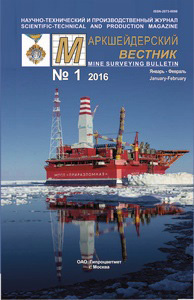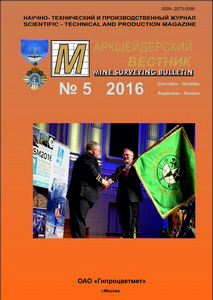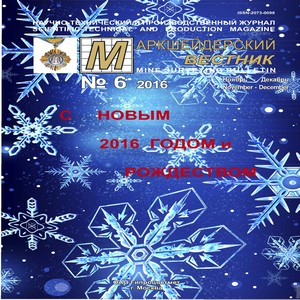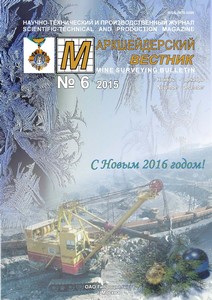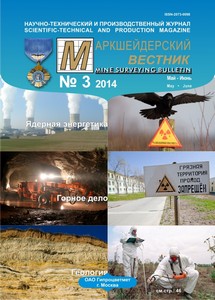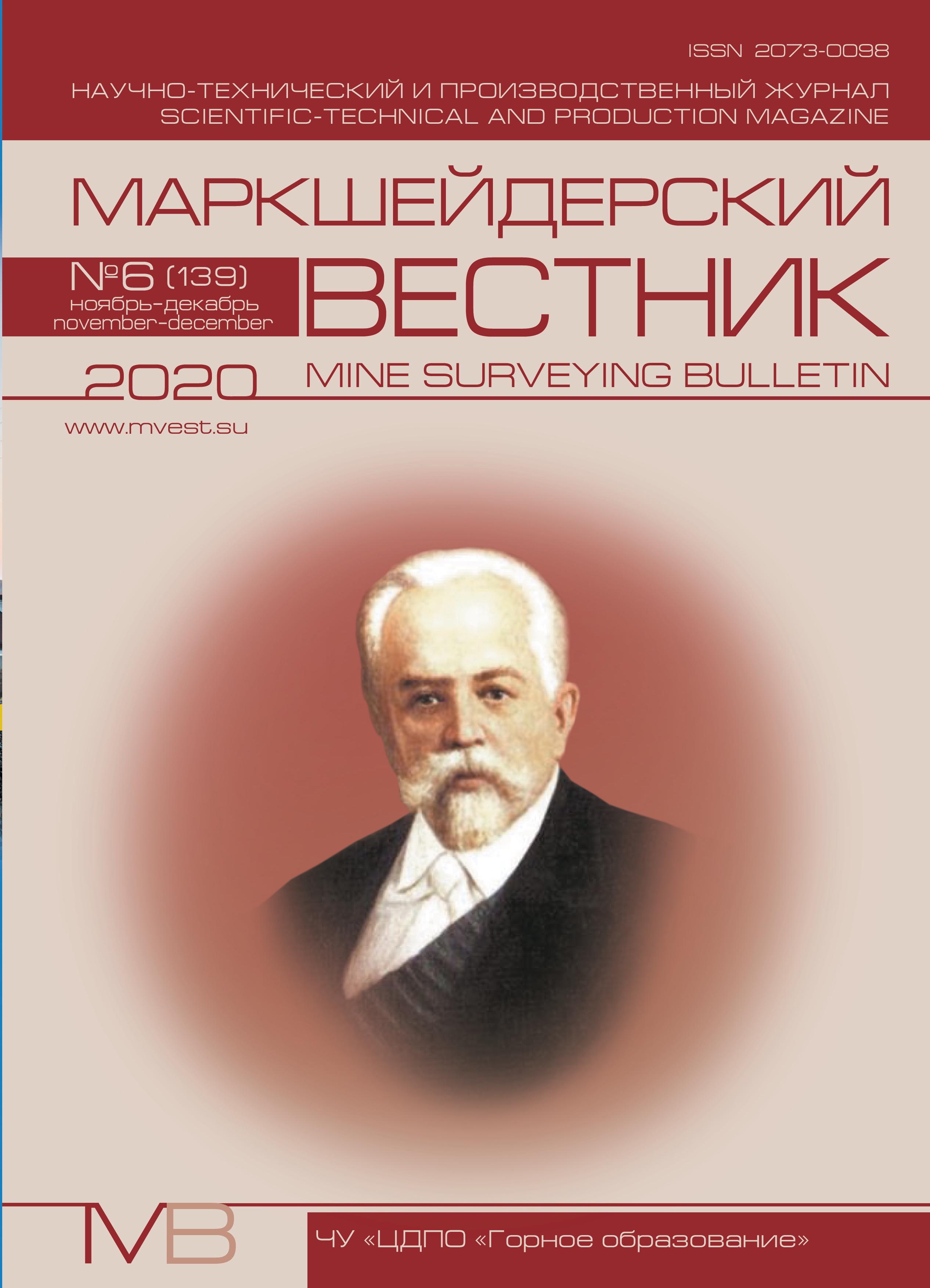 LEGAL ISSUES OF SUBSOIL USE
LEGAL ISSUES OF SUBSOIL USE
E. I. Panfilov On improving the quality of federal laws related to the development of mineral resources of the earth’s interior (expert assessment) – р. 4
In this paper, an expert assessment of the quality of two adopted Federal laws: “on stimulating the extraction of rare metals”; “on hard-to-recover minerals” and the draft law “on subsurface use waste”. They allow us to state that there are major shortcomings in these legislative acts that do not contribute to the effective activity of the country’s mineral and industrial complex. The main reasons for the deterioration of legislative activity in the field of subsurface use are noted and specific measures to improve it are proposed.
Keywords: subsoil; mineral resources; geological exploration; mining; hard-to-recover minerals; taxation; subsoil use legislation; federal laws; bills; expert assessment; recommendations.
V. V. Gritskov About innovations in the licensing of mine survey works – р. 14
The article is based on the materials of the author’s report at the seminar “Features of the application of new requirements for the production of geological and mine surveying”, Moscow, 01.12.2020.
Keywords: subsurface use; regulatory regulation; production of surveying works; licensing; licensing requirements; qualification; Rostekhnadzor.
V. N. Suchenko Mine surveying support networks on the surface – р. 23
Made the analysis of the regulatory and legal documentation of the subsurface use mine survey support for the construction of support networks on the surface. The name and method of creation of such networks in the territory of production and economic activity of mining enterprises and construction of municipal tunnels are proposed.
Keywords: subsurface use; regulatory documentation; «regulatory guillotine»; surveying; licensing; reference networks; geodetic networks.
On the expediency of preserving the institute of licensing of mine surveying works – р. 28
GEODESY, MINE SURVEYING, GIS
A. V. Gal’yanov Geometrization of technological processes how to develop the ideas of subsurface geometry – р. 30
The author considers the idea of geometrization of technological processes as a direct consequence of the development of P. K. Sobolevsky’s idea of geometrization of mineral deposits. The prerequisites for the formation of a new direction of research in mining sciences, the distinctive features of the geometrization of processes from the geometrization of the geochemical field are considered, the contours of the theoretical foundations of this idea are outlined.
Keywords: subsurface geometry; mining; technology; geometrization of processes; distinctive features; objective function; computer technologies.
V. I. Gleizer The history of the development of domestic surveying gyroscopy. Part 9 – р. 36
The historical heritage in the field of surveying gyroscopic measuring instruments is considered. The analysis of the process of creating domestic surveying explosion-proof gyrocompasses with torsion suspension pendulum sensing element is given. The process of improving the design of surveying gyroscopic devices is reflected (period 80–90 years оf the XX century).
Keywords: gyroscopic orientation; surveying gyrocompasses; improvement of structures; automation of the measurement process.
M. G. Mustafin, H. М. Choker Estimation of the influences of the linear-angular parameters of the laser-scanning observation on the object model construction accuracy – р. 42
The possibility of using laser scanning technology for fixing cultural heritage monuments is being considered. The review of these studies presents a methodology for assessing the accuracy of a groundbased laser scanning survey performed in full-scale conditions with differentiation of errors caused by the angle of incidence of the beam and the distance to the object. The least-squares method is illustrated for calculating the coordinates of the points of laser reflections and assessing their accuracy.
Keywords: cultural monuments; fixation; terrestrial laser scanning (TLS); geodetic network; angle of incidence (AOI); three-dimensional model; accuracy; coordinates; least-squares method.
M. G. Mustafin, H. J. Al Fatin, H. M. Hatoum Some features of monitoring deformation processes at mining and hydraulic facilities – р. 51
When organizing monitoring of deformation processes of various objects, the priority issue is to ensure the required measurement accuracy. In accordance with the normative documents, the root-meansquare error of measurements of the settlement should not exceed 1–2 mm, and horizontal displacements 2–5 mm, depending on the type of soil. To ensure this accuracy, a careful study of the design of the observation station is required. The article provides an analysis of approaches to solving this problem in relation to the construction of the metro lobby. The important aspects of geodetic monitoring at water retaining hydraulic structures (dams) are considered. It is proposed to carry out observations taking into account the water level in the reservoir and to carry them out only when the water level is at average elevations and above, which are dangerous for the stability of the dam. It is also recommended to place deformation marks on the dam not in a regular manner, but in accordance with the stress-strain state pattern. The design and accuracy assessment of the deformation network at the Dukan Dam in Iraq was carried out.
Keywords: оbservation station, soil massif, excavation, deformations, measurements, monitoring, underground metro structures, geodetic resection, geodetic reference network, robotic tacheometer, dams, reservoir water level, deformation marks.
ISSUES OF GEOTECHNOLOGY
V. N. Komlev Depth disposal of radioactive waste: requirements and reality – р. 61
For the first time, perhaps, using the example of the objects of Zheleznogorsk in the Krasnoyarsk Territory, an attempt was made to consider jointly different facets of the Russian substantiation of radioactive waste disposal sites. A selection of regulatory and expert documents and their sections on the subject has been compiled. The selection is sufficient for important checks on the completeness and quality of scientific and technical approaches to safety assessment. First of all, in the context of hydrogeological conditions. It is shown that many aspects of the safety of a federal radioactive waste disposal facility may need reliable evidence based on the exploratory stage of geological study of the site and compliance with legislation, norms and rules in the field of the use and protection of subsoil.
Keywords: radioactive waste disposal; geology; law; license; expertise; Rosatom; FSUE «NO RWM»; Yenisei site; Krasnoyarsk; Russia.



